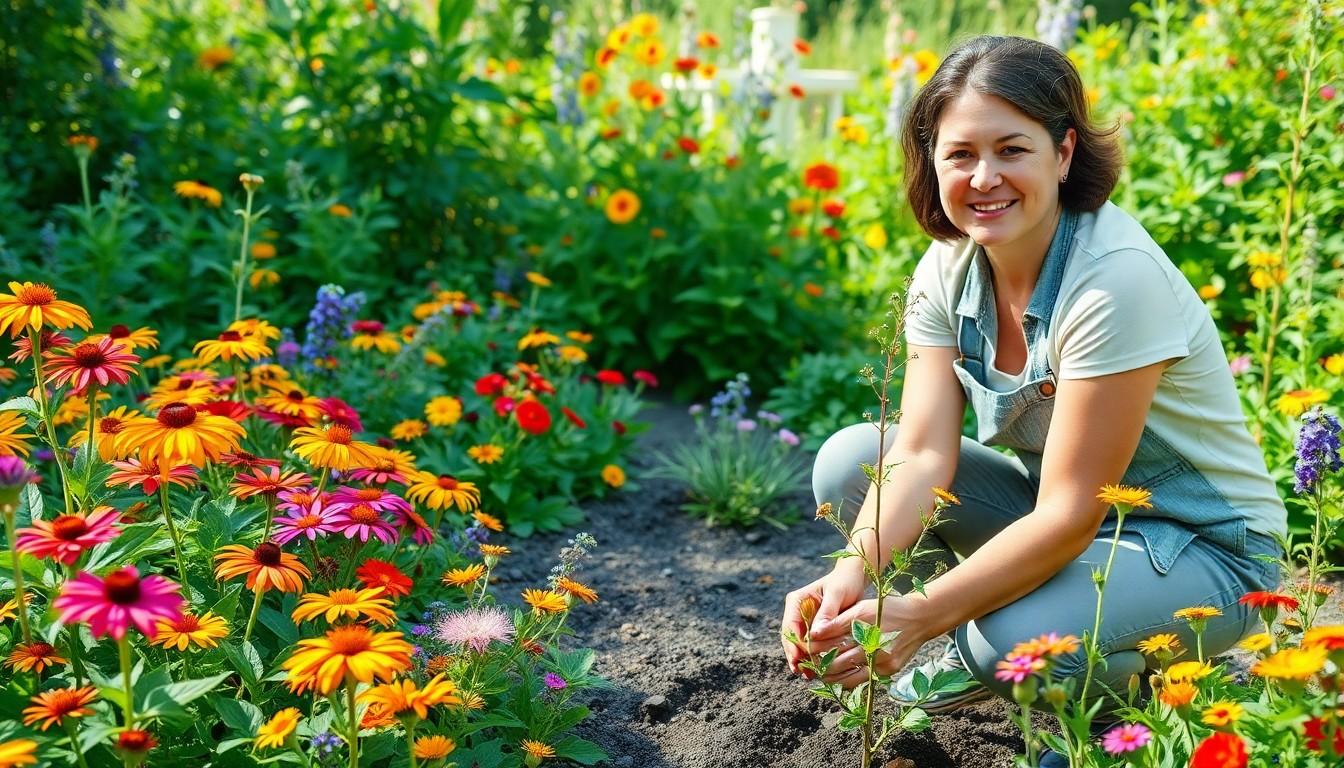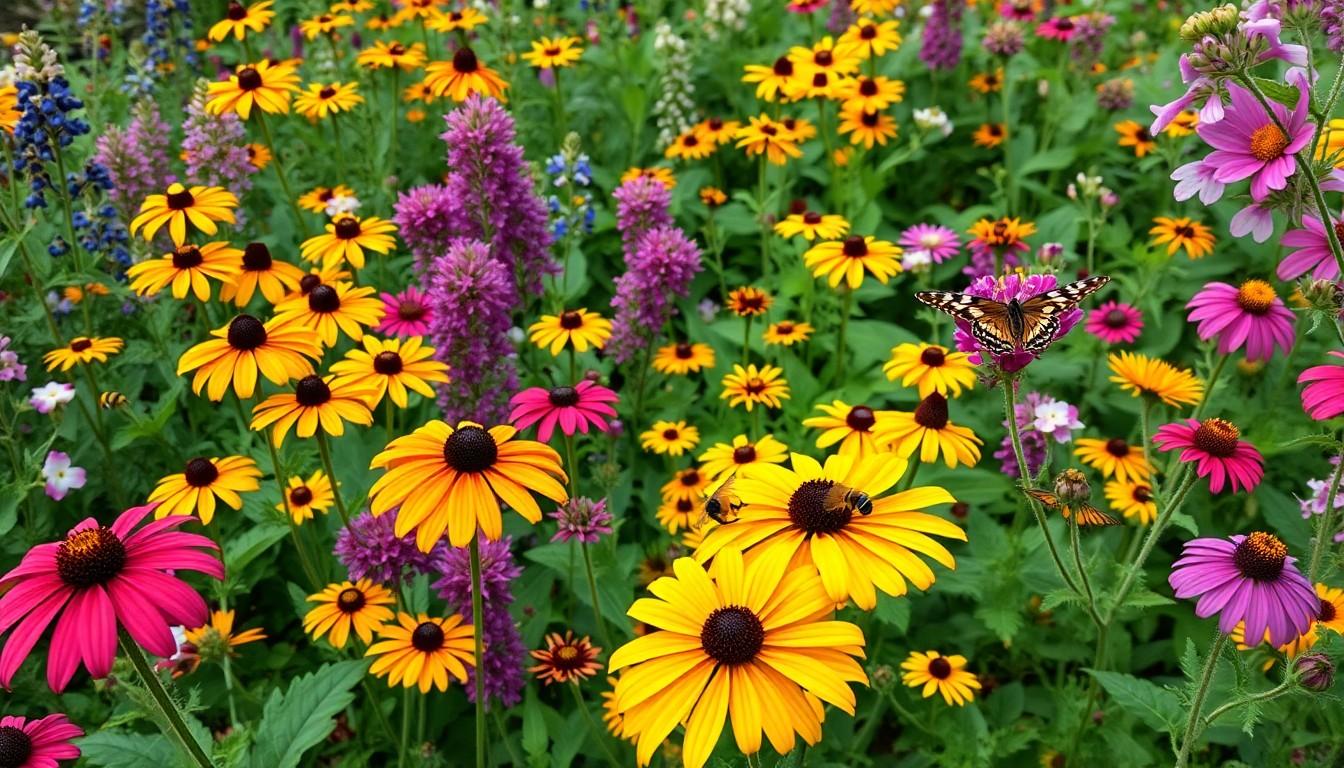Phone:
(701)814-6992
Physical address:
6296 Donnelly Plaza
Ratkeville, Bahamas.

Maryland’s native plants are like the unsung heroes of the garden world, quietly thriving while their flashy exotic cousins steal the spotlight. These local flora not only add beauty to landscapes but also support wildlife and promote biodiversity. Imagine a garden that’s not just pretty but also a buzzing hub for pollinators and birds—sounds like a win-win, right?
Choosing native plants means less fuss and more fun. They’re adapted to the local climate, meaning they won’t throw a tantrum in a drought or drown in a downpour. Plus, they’re low-maintenance, giving gardeners more time to sip lemonade and enjoy the view. So, why not embrace the charm of Maryland’s native plants and create a garden that’s as unique as the state itself? Let’s dig into the vibrant world of these local botanicals and discover why they deserve a spot in every garden.
Native Maryland plants play a critical role in supporting local ecosystems. These species, adapted to the region’s climate, require less water and maintenance than non-native alternatives. Gardens filled with native plants attract various wildlife, including butterflies, bees, and birds, fostering biodiversity.
Maryland boasts a variety of native flora. Examples include the Black-eyed Susan, the state flower, recognized for its vibrant yellow petals. Additionally, the Eastern Redbud adds beauty with its striking pink blossoms in spring. These plants thrive in their natural habitats, making them resilient choices for gardeners.
Many native plants offer seasonal interest. The Cardinal Flower blooms in summer, providing bright red hues, while the Pine Barrens Treefrog prefers the moisture-rich environments these plants create. Incorporating native species into landscaping can enhance both aesthetic appeal and ecological health.
Utilizing native Maryland plants contributes to reducing environmental impact. Less reliance on fertilizers and pesticides not only promotes healthier soil but also benefits nearby wildlife. Furthermore, these plants often resist local pests and diseases, creating a sustainable gardening practice.
Local nurseries frequently stock native varieties. Gardeners can visit specialized centers to find endemic plants suited for specific areas in Maryland. Engaging with professional landscapers familiar with the region enhances the selection process and ensures proper plant placement.
Exploring local parks or nature reserves presents additional inspiration. Observing how native plants flourish in their habitats provides valuable insights for gardeners looking to replicate natural beauty. The benefits of incorporating native flora extend beyond aesthetics, creating a sustainable and vibrant gardening environment.

Native plants offer numerous advantages, enriching both the environment and personal landscapes.
Native plants support local ecosystems by providing essential habitat and food sources for wildlife. They attract pollinators such as bees, butterflies, and hummingbirds, fostering biodiversity. Plants like Black-eyed Susans and Eastern Redbuds create natural feeding and nesting areas tailored to regional wildlife needs. Water conservation is a key benefit, as native species typically require less irrigation than non-native plants. Furthermore, their deep root systems reduce soil erosion and promote healthier soil composition, contributing to a stable ecosystem.
Incorporating native plants enhances garden beauty and promotes seasonal interest. Varieties of native flora present vibrant colors and distinct textures that flourish throughout the year. Gardens filled with these species reflect the natural landscape, creating visually appealing spaces. Many native plants also produce striking blooms, which attract attention and encourage admiring wildlife. Choosing native plants allows for a diverse garden design that resonates with local identity, blending seamlessly into the surrounding environment.
Native plants thrive in Maryland’s diverse environments, each offering unique benefits and beauty. These plants effortlessly adapt to local conditions, making them ideal for any garden.
Maryland boasts a variety of flowering plants that enhance gardens with vibrant colors and support local wildlife. The Black-eyed Susan showcases striking yellow petals and dark centers, thriving in sunny locations. Butterfly weed attracts pollinators, particularly monarch butterflies, while Purple coneflower provides a lovely display and drought resistance. Wildflowers like Trillium bloom in spring, adding more beauty with their distinct three-petal design. Emphasizing ongoing flowering cycles helps maintain garden interest across seasons.
Trees and shrubs contribute to Maryland’s native landscape, offering shade and habitat for wildlife. The Eastern Redbud displays beautiful pink blooms in early spring, making it a popular choice for gardens. American Holly serves as an evergreen option, providing food for birds during winter months. Gray Dogwood thrives in a variety of soils, offering attractive berries and dense foliage. Red Maple offers striking fall color, enhancing landscapes while cooling outdoor spaces during summer. Incorporating these selections creates a balanced and supportive ecosystem.
Creating a garden filled with native Maryland plants enhances aesthetic appeal while supporting local ecosystems. Proper planning ensures successful growth and vibrant landscapes.
Choosing the right location for native plants is crucial. Assess sunlight exposure, soil type, and moisture levels for optimal growth. Clear the area of non-native weeds to reduce competition. Amending the soil with organic matter improves drainage and nutrient content. Planting in clusters mimics natural systems and encourages wildlife visits. These steps promote healthy root development and establish a thriving garden environment.
Caring for native plants requires less effort compared to non-natives. Regularly monitor moisture levels to avoid overwatering, given their drought tolerance. Pruning may enhance aesthetics and encourage healthy growth. Fertilization often isn’t necessary, as native plants thrive in local conditions. Observe for pests, but remember that native species generally resist common threats. Mulching conserves moisture, reduces weeds, and protects soil quality. These maintenance practices cultivate a resilient and beautiful native garden.
Conserving native plant habitats requires active involvement from individuals and communities. Engaging in local conservation efforts enhances ecosystem resilience. Reducing non-native plant growth contributes to healthier environments for Maryland’s native flora.
Support local initiatives focused on maintaining natural areas, such as parks or wetlands. Joining organizations that promote native plant preservation fosters community awareness. Participating in habitat restoration projects directly impacts local ecosystems.
Maintaining a balance of native species supports biodiversity, creating habitats for wildlife. Planting native species in residential areas minimizes competition from invasive alternatives. Advocating for responsible gardening practices encourages more residents to plant natives.
Monitoring local ecosystems helps identify areas in need of conservation. Collaborating with local governments aids in developing policies that protect native habitats. Educating others about the importance of native plants creates a culture of conservation.
Implementing native plant gardens in public spaces enhances community engagement. Community workshops can provide valuable resources for learning about native plants. Promoting native plant sales at local nurseries increases accessibility to native flora.
Practicing simple techniques like mulching and creating rain gardens benefits the local environment. Supporting native plant cultivation contributes to soil health and water conservation. Recognizing the importance of these plants encourages a sustainable approach to gardening.
Advocating for native plant habitats ensures long-term ecological balance. Leaders in conservation can inspire others through their dedication to preserving local biodiversity. Together, these collective efforts contribute to a thriving ecosystem for future generations.
Embracing native Maryland plants offers a sustainable approach to gardening that benefits both the environment and local wildlife. These plants not only thrive in their natural habitats but also require less maintenance and resources, making them an ideal choice for any gardener.
By selecting native species, individuals contribute to the preservation of local ecosystems while enhancing the beauty of their landscapes. Through community involvement and responsible gardening practices, everyone can play a part in fostering biodiversity and ensuring the health of Maryland’s natural heritage for future generations.